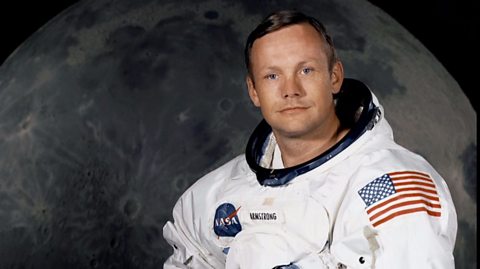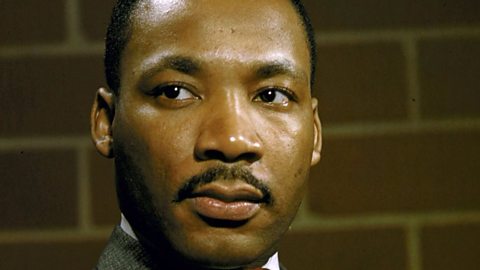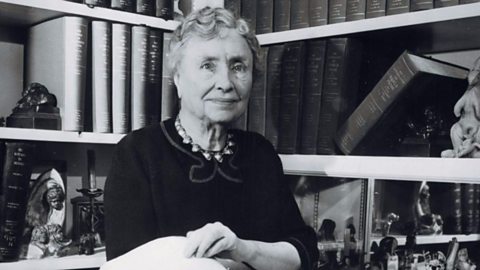TREVOR MCDONALD: In the 1940s South Africa was under apartheid rule: the doctrine that white people were somehow superior to Black people. The white police force sometimes tortured and killed the regimeŌĆÖs Black opponents.
Nelson Mandela was a leader of the African National Congress, the main group arguing that all races should have equal rights and crucially, the vote. The ANC favoured peaceful protests, but the state showed no such restraint.
Mandela set up a military wing of the ANC: the Spear of the Nation.
ARCHIVE RECORDING OF NELSON MANDELA: It is useless and futile for us to continue talking peace and non-violence against a government whose reply is only savage attacks on an unarmed and defenseless people.
TREVOR MCDONALD: A bombing campaign began. Mandela targeted infrastructure to avoid human casualties but the organisation he helped to found would later go on to kill hundreds of people. His arrest made international headlines.
He felt the apartheid system left him no choice and that he was a freedom fighter. To many others, he was a terrorist.
In 1963 his trial began and Mandela the icon was born.
Mandela turned the trial into a platform to argue the ANCŌĆÖs cause, not just to the judge but to a gallery full of reporters who would take his message to the world.
Did he even, in the dock, have the look of a natural leader?
GEORGE BIZOS: Absolutely, the way in which, Mandela and his colleagues gave their evidence, showed to the world at large that apartheid is not for human beings.
TREVOR MCDONALD: Facing possible execution for his crimes, Mandela representing himself, read out his closing statement.
ARCHIVE RECORDING OF NELSON MANDELA: I have fought against white domination and I have fought against Black domination. I have cherished the ideal of a free society. In which all persons will live together in harmony. It is an ideal which I hope to live for. But my lord if it needs beŌĆ” it is an ideal for which I am prepared to die.
TREVOR MCDONALD: As the world watched on, the state drew back from the death penalty. Instead he was sentenced to life imprisonment. For 27 years he would be hidden from public view and forbidden from speaking to the outside world.
In 1990 it was announced that Mandela would finally be released. He was 71 years old.
People crowded these streets in an explosion of joy and singing and dancing.
He began negotiations with his former oppressors. And in April, 1994, only four years after his release, he finally achieved his greatest ambition, to bring democracy to South Africa for all its people. In the first free election ever held, Mandela took almost 65% of the vote and became the countryŌĆÖs first Black leader.
Mandela had the ability to go against the tenure of his time and yet, paradoxically, to persuade millions to follow him.
Sir Trevor McDonald reports on Nelson Mandela, who went from freedom fighter to become South AfricaŌĆÖs first Black president.
In the 1940s, South Africa was under apartheid rule: the doctrine that white people were somehow superior to Black people. The white police force sometimes tortured and killed the regimeŌĆÖs Black opponents.
Nelson Mandela became a leader of the African National Congress, the main group arguing that all races should have equal rights and crucially the vote. The ANC favoured peaceful protests but the state showed no such restraint.
Mandela set up a military wing of the ANC, the Spear of the Nation and began bombing infrastructure to avoid human casualties but the organisation he helped to found would later go on to kill hundreds of people.
He was arrested in 1963 and went on trial for his crimes, but Mandela turned the trial into a platform to argue the ANCŌĆÖs cause, not just to the judge but to a gallery full of reporters who would take his message to the world.
Mandela representing himself, read out a powerful closing statement and the state drew back from the death penalty. Instead he was sentenced to life imprisonment.
For 27 years in was in prison on Robben Island. In 1990 it was announced that Mandela would finally be released. He was 71 years old.
He began negotiations with his former oppressors and in April 1994, only four years after his release, he finally achieved his greatest ambition, to bring democracy to South Africa for all its people. In the first free election ever held, Mandela took almost 65% of the vote and became the countryŌĆÖs first Black leader.
This short film is from the 91╚╚▒¼ series, Icons.
Teacher Notes
Key Stage 3 - History
This short film could be used to discuss:
- Key figures in the 20th century
- South African history
- A history of human rights
- Apartheid history
- African history
- Activism
Curriculum Notes
This short film is suitable for teaching history at KS3 in England, Wales and Northern Ireland and Third and Fourth Level in Scotland.

More from Icons:
Neil Armstrong - First person on the Moon. video
Dermot OŌĆÖLeary explains how Neil Armstrong flew planes for the US in the Korean war and as a test pilot before he made history as the first person to walk on the MoonŌĆÖs surface.

Marie Curie - The person who discovered radium and polonium. video
Chris Packham explains how Marie CurieŌĆÖs discovery of polonium and radium changed atomic theory and how her study of radioactivity helped doctors save thousands of lives.

Dr Martin Luther King - American Civil Rights leader. video
Sanjeev Bhaskar finds out how Dr Martin Luther King advanced the Civil Rights movement in America through non-violent resistance.

Helen Keller - The writer who proved her disability was not debilitating. video
Sanjeev Bhaskar explores the life of Helen Keller, a writer, journalist, activist and ambassador who was deaf and blind but proved her disability was not debilitating.
